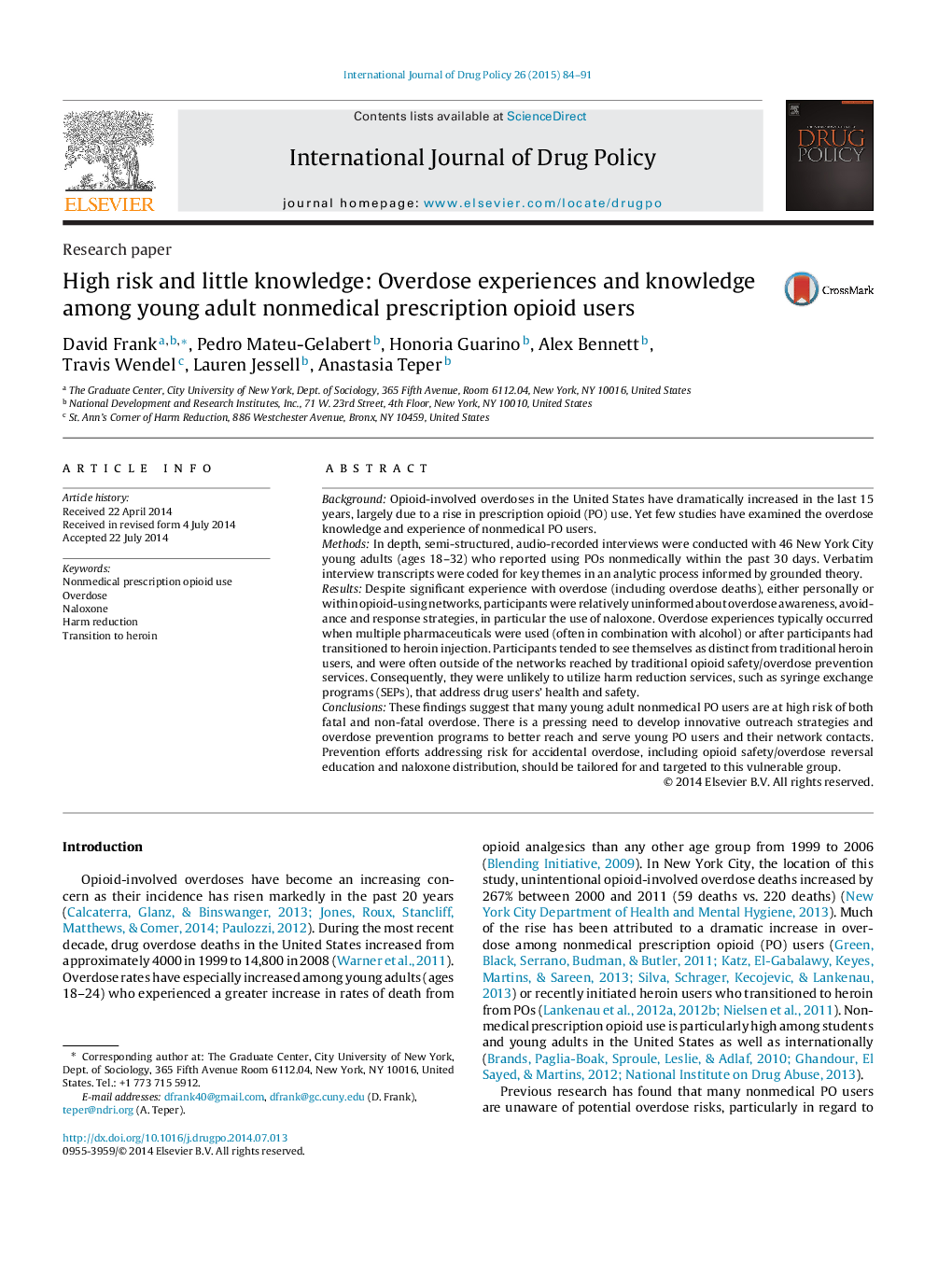| کد مقاله | کد نشریه | سال انتشار | مقاله انگلیسی | نسخه تمام متن |
|---|---|---|---|---|
| 1075288 | 1486290 | 2015 | 8 صفحه PDF | دانلود رایگان |
• Despite significant overdose experiences, nonmedical prescription opioid users were uninformed about overdose prevention.
• Despite significant overdose experiences, nonmedical prescription opioid users were uninformed about the use of naloxone.
• Nonmedical prescription opioid users in our study tended to see themselves as distinct from traditional heroin users.
• Nonmedical prescription opioid users were often outside of the networks reached by overdose prevention services.
• There is a pressing need to develop outreach strategies to better reach young adult nonmedical prescription opioid users.
BackgroundOpioid-involved overdoses in the United States have dramatically increased in the last 15 years, largely due to a rise in prescription opioid (PO) use. Yet few studies have examined the overdose knowledge and experience of nonmedical PO users.MethodsIn depth, semi-structured, audio-recorded interviews were conducted with 46 New York City young adults (ages 18–32) who reported using POs nonmedically within the past 30 days. Verbatim interview transcripts were coded for key themes in an analytic process informed by grounded theory.ResultsDespite significant experience with overdose (including overdose deaths), either personally or within opioid-using networks, participants were relatively uninformed about overdose awareness, avoidance and response strategies, in particular the use of naloxone. Overdose experiences typically occurred when multiple pharmaceuticals were used (often in combination with alcohol) or after participants had transitioned to heroin injection. Participants tended to see themselves as distinct from traditional heroin users, and were often outside of the networks reached by traditional opioid safety/overdose prevention services. Consequently, they were unlikely to utilize harm reduction services, such as syringe exchange programs (SEPs), that address drug users’ health and safety.ConclusionsThese findings suggest that many young adult nonmedical PO users are at high risk of both fatal and non-fatal overdose. There is a pressing need to develop innovative outreach strategies and overdose prevention programs to better reach and serve young PO users and their network contacts. Prevention efforts addressing risk for accidental overdose, including opioid safety/overdose reversal education and naloxone distribution, should be tailored for and targeted to this vulnerable group.
Journal: International Journal of Drug Policy - Volume 26, Issue 1, January 2015, Pages 84–91
